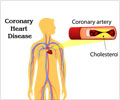Major air pollutants are associated with a higher risk of heart attack, says study published in JAMA.

Hazrije Mustafic, M.D., M.P.H., of the University Paris Descartes, INSERM Unit 970, Paris, and colleagues conducted a systematic review and meta-analysis to examine the association between short-term exposure to air pollutants and the risk of heart attack, and to quantify these associations. The major air pollutants included in the analysis were ozone, carbon monoxide, nitrogen dioxide, sulfur dioxide, and particulate matter (PM) with an aerodynamic diameter of 10 μm (micrometers; PM10) or less and those 2.5 micrometers (PM2.5) or less.
The researchers conducted a search of the medical literature and identified 34 studies that met criteria for inclusion in the analysis, which indicated associations of statistical significance between all analyzed air pollutants and heart attack risk, with the exception of ozone. The subgroup analysis, based on study quality, yielded results comparable with those from the overall analysis.
The authors suggest a number of possible mechanisms for the associations found. "The first potential mechanism is inflammation. Studies have shown that levels of inflammatory markers such as C-reactive protein are higher as a result of exposure to air pollution. The second potential mechanism is abnormal regulation of the cardiac autonomic system. Several observational studies have linked high levels of air pollution with increased heart rate and decreased heart rate variability. The third possible mechanism is an increase in blood viscosity as a result of air pollution. This association can promote thrombus [blood clot] formation, accelerate the progression of atherosclerosis, and weaken the stability of atherosclerotic plaques."
The researchers acknowledge that the magnitude of association found in this study is relatively small compared with those of classic heart attack risk factors, such as smoking, hypertension, or diabetes. "Nevertheless, the population attributable fractions of each pollutant is not negligible because the majority of the population, including young and disabled patients, is exposed to air pollution, particularly in urban settings, and thus an improvement in air quality could have a significant effect on public health."
"In conclusion, our meta-analysis is the first to our knowledge to evaluate the quality and magnitude of associations between short-term exposure to major air pollutants and the risk of MI," the authors write. "Further research is needed to determine whether effective interventions that improve air quality are associated with a decreased incidence of MI."
Advertisement















